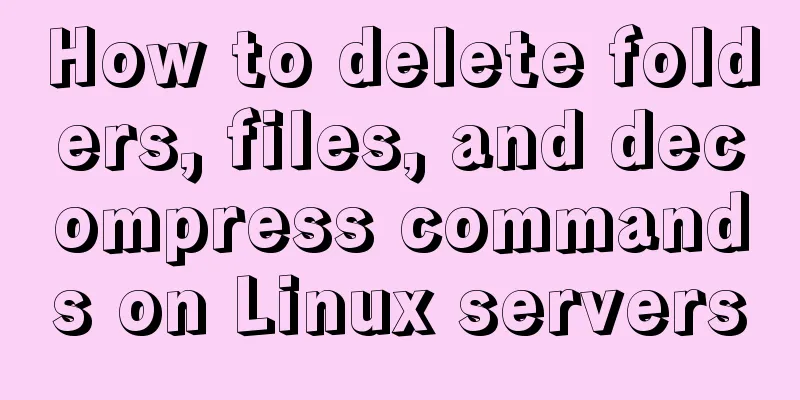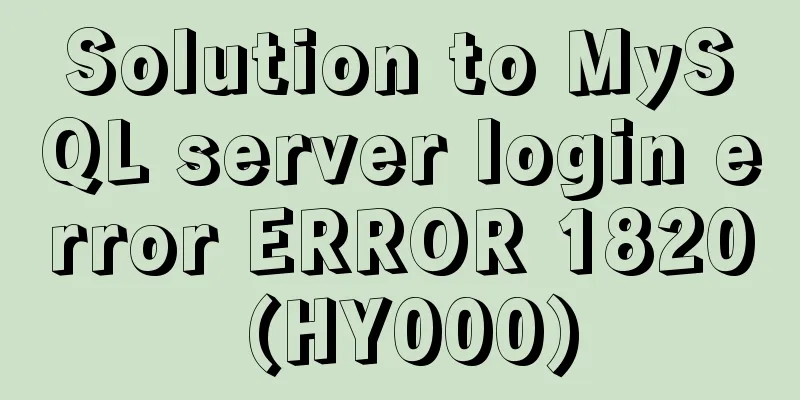How to delete folders, files, and decompress commands on Linux servers

|
1. Delete folders Example: rm -rf /usr/java The /usr/java directory and all files and folders under it will be deleted 2. Delete files Example: rm -f /usr/tomcat/conf/server.xml The file /usr/tomcat/conf/server.xml will be deleted forcefully 3. Decompression 1. Unzip to the current directory Example: tar -zxvf jdk-8u131-linux-x64.tar.gz Will unzip jdk-8u131-linux-x64.tar.gz to the current directory where it is located The above method of deleting folders, deleting files, and decompressing commands on Linux servers is all the content that the editor shares with you. I hope it can give you a reference, and I also hope that you will support 123WORDPRESS.COM. You may also be interested in:
|
<<: A little-known JS problem: [] == ![] is true, but {} == !{} is false
>>: Detailed installation tutorial of mysql-8.0.11-winx64.zip
Recommend
Docker image optimization (from 1.16GB to 22.4MB)
Table of contents The first step of optimization:...
A small piece of HTML code will include the Baidu search bar in your page
<html> <head> <meta http-equiv=&quo...
Basic knowledge of load balancing and a simple example of load balancing using nginx
Nginx can generally be used for seven-layer load ...
jQuery implements the practice of changing the position and size of div by dragging the mouse
To achieve an effect similar to Windows forms, dr...
Detailed explanation of value transfer between parent and child components in Vue3
It has been a long time since the birth of vue3, ...
Implementation code of front-end HTML skin changing function
50 lines of code to change 5 skin colors, includi...
Web page color matching example analysis: Green color matching web page analysis
<br />Green is between yellow and blue (cold...
MySQL 5.7 cluster configuration steps
Table of contents 1. Modify the my.cnf file of se...
Solution to the ineffective global style of the mini program custom component
Table of contents Too long to read Component styl...
Understanding Nginx Current Limitation in One Article (Simple Implementation)
Nginx is now one of the most popular load balance...
How to create a table in mysql and add field comments
Directly post code and examples #Write comments w...
Several ways to implement CSS height changing with width ratio
[Solution 1: padding implementation] principle: I...
Web Design Experience: Self-righteous Web Designers
1. Trash or Classic? Web technology updates very ...
Detailed explanation of scroll bar scrolling control of DOM elements in HTML
I don't know if you have ever encountered suc...
We're driving IE6 to extinction on our own
In fact, we wonder every day when IE6 will really...









